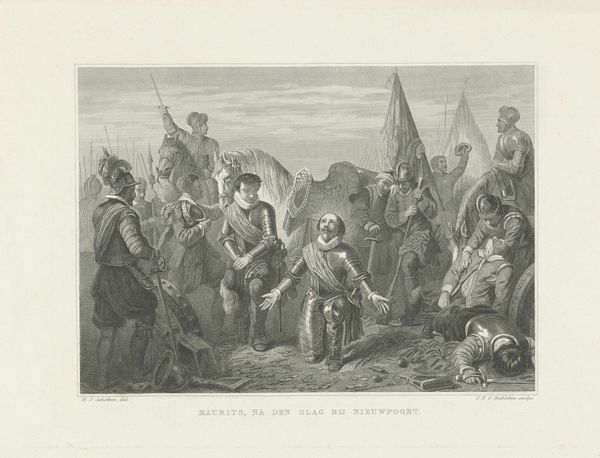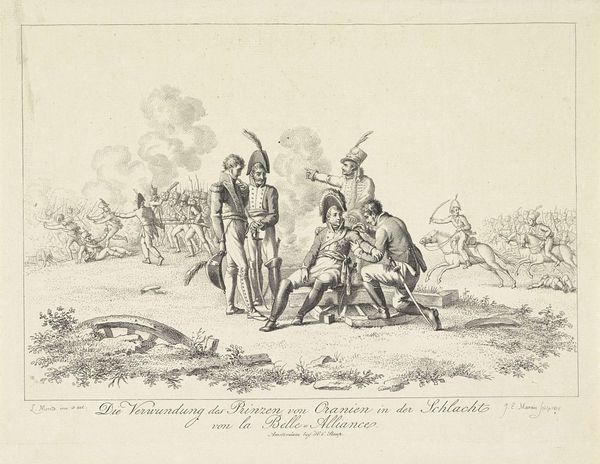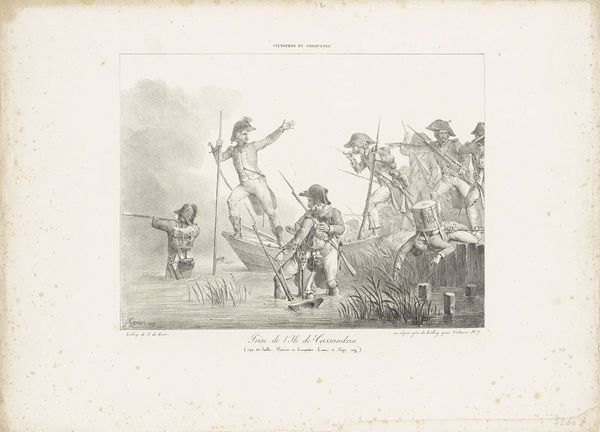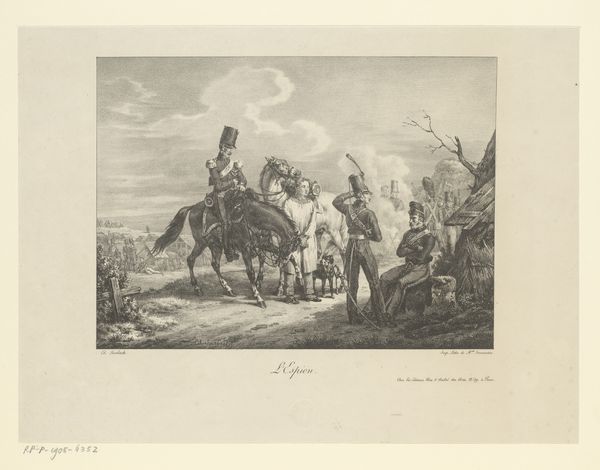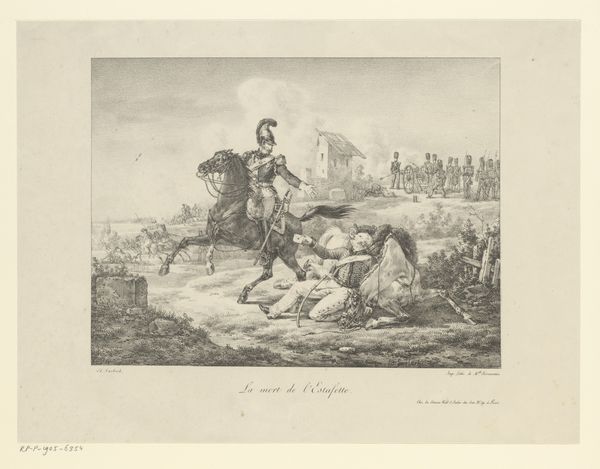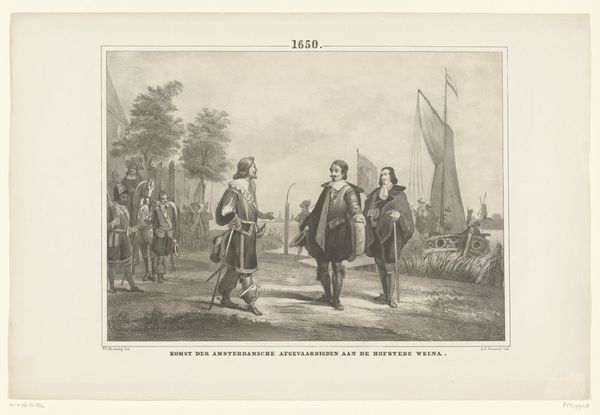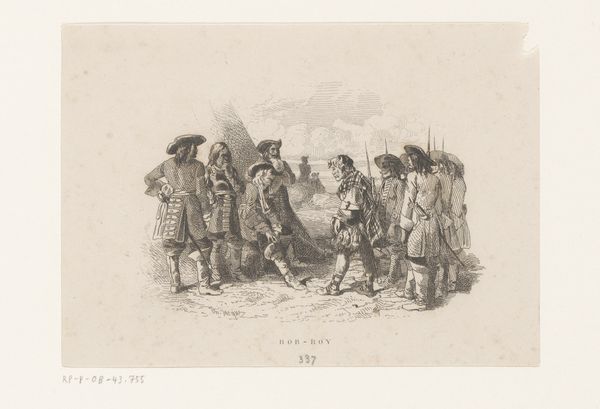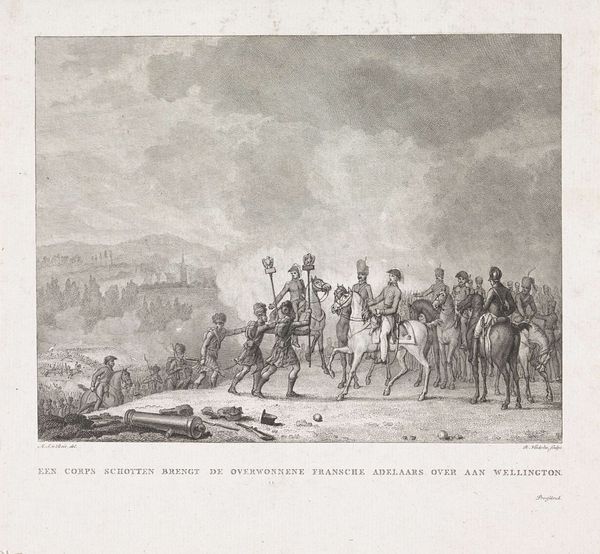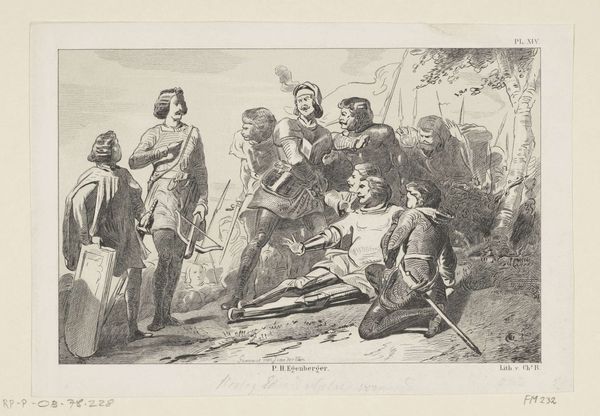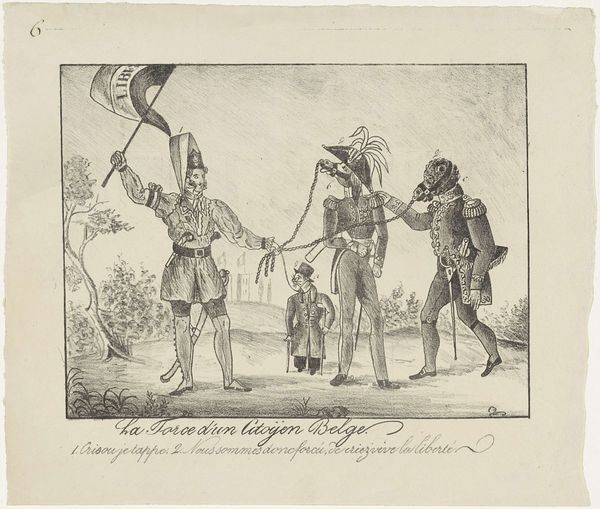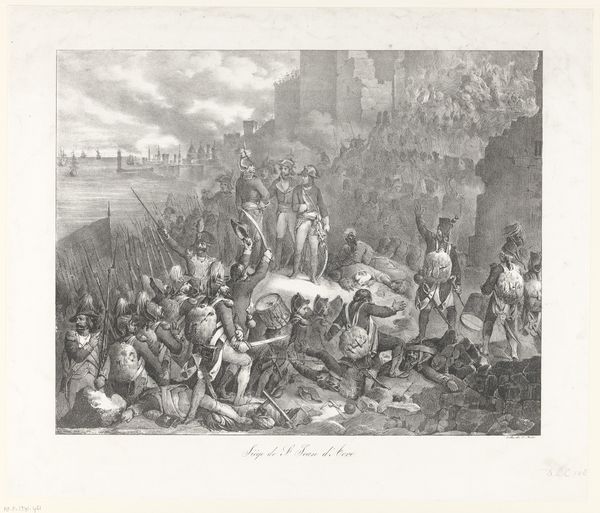
Civilis en Cerialis onderhandelen op de afgebroken brug 1840 - 1884
0:00
0:00
Dimensions: height 291 mm, width 214 mm
Copyright: Rijks Museum: Open Domain
Editor: Here we have Johann Wilhelm Kaiser's engraving, "Civilis en Cerialis onderhandelen op de afgebroken brug," dating somewhere between 1840 and 1884. It strikes me as a really theatrical staging of a historical moment. What kind of narrative do you think the artist is trying to construct here? Curator: This piece allows us to examine 19th-century romanticism’s engagement with history, especially its tendency to frame national identity through heroic narratives. Note the positioning of Civilis, seemingly commanding the landscape, versus Cerialis in his Roman military garb. Who holds power, and how is Kaiser visually constructing that power dynamic for his contemporary audience? Editor: I see that, but I also wonder about the bridge, or the lack thereof. It feels very symbolic of a broken relationship or a point of contention. Curator: Absolutely. Think about what a bridge *represents*: connection, access, negotiation. Its deliberate absence here underscores not only the immediate conflict but also suggests deeper ruptures in the relationship between colonizer and colonized, invader and native. Does this imagery complicate how we are supposed to understand who is the "hero"? Editor: It definitely makes you think. The details in the figures' expressions also seem important – like the tension is palpable. Curator: Exactly. The print’s detail invites us to consider individual experiences within grand historical narratives, highlighting not just the leaders but the silent witnesses surrounding them. How might those individuals be differently impacted by this historical moment and, subsequently, its artistic representation? This image becomes an archive of possible colonial encounters and resistance, opening dialogue with the contemporary viewer about power structures, their manifestations and perpetuation through artistic media. Editor: I never considered all the nuances baked into a seemingly simple historical depiction. Thanks for broadening my understanding. Curator: It's these kinds of dialogues, bridging historical context with contemporary analysis, that really bring art to life, allowing us to continuously re-evaluate its meanings and implications.
Comments
No comments
Be the first to comment and join the conversation on the ultimate creative platform.
